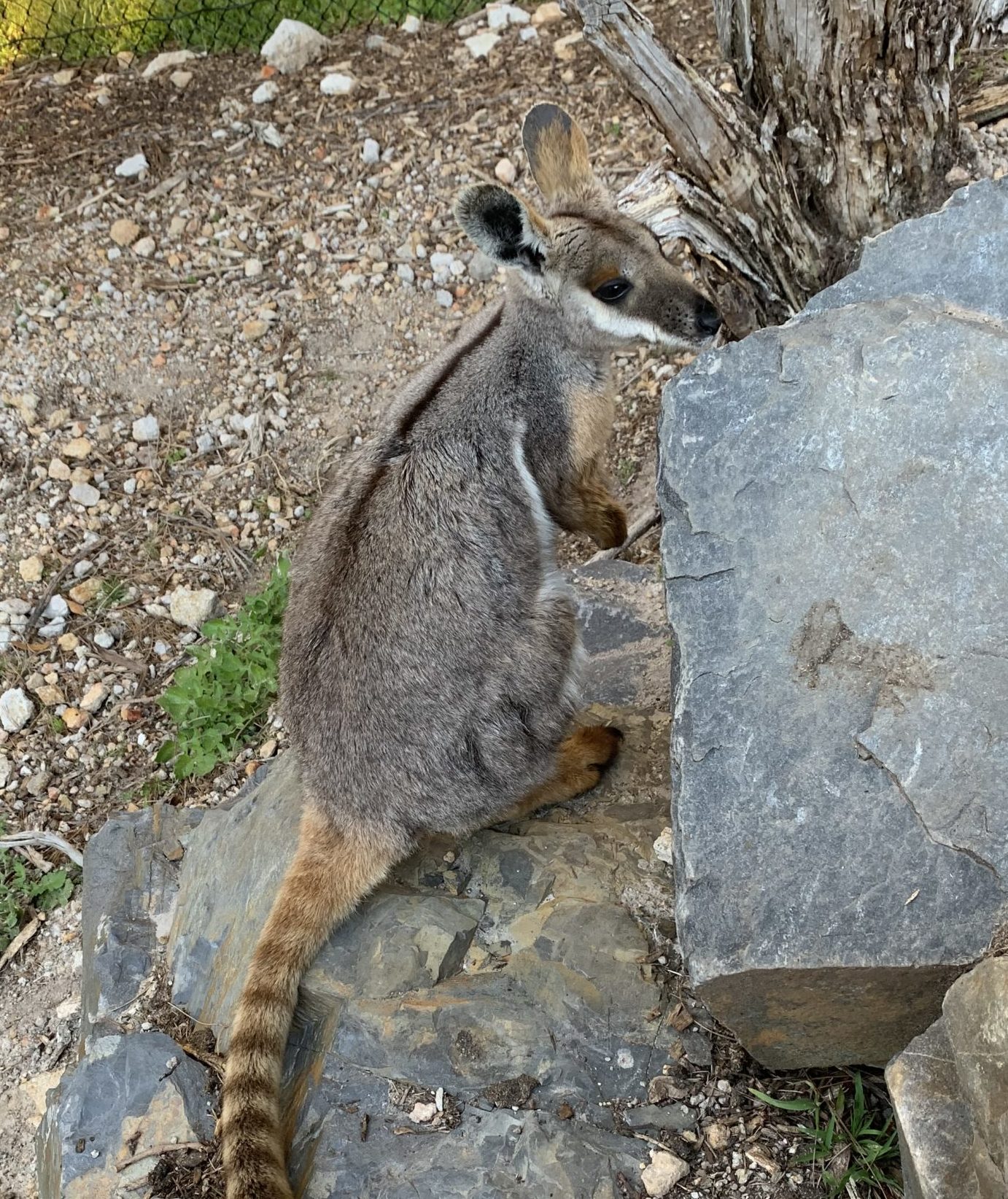Macropodidae family
Kangaroos & wallabies
Macropodids are a diverse group of marsupial herbivores found in most terrestrial ecosystems in Australia and New Guinea. There are over 60 living species, ranging in size from the diminutive 1.6-kg monjon, or dwarf rock-wallaby (Petrogale burbidgei), to the muscular, fighting male red kangaroos (Osphranter rufus), which weigh up to 90 kg and can stand 2 metres tall.
The evolutionary history of macropodids stretches back to the rainforests of late Oligocene–early Miocene Australia (28–20 million years ago). Their ancestors, preserved in sites like the Riversleigh World Heritage Area in eastern QLD and Lake Pinpa in central SA, were small, vaguely possum-like herbivores and omnivores, that hopped and bounded through dense forests.
Central and western Australia began to dry out in the mid- to late Miocene (15–10 million years ago), and the macropodid hop became a valuable asset for moving quickly and efficiently across more open habitats. With this adaptive advantage they radiated into a suite of herbivore niches.
In the Pliocene and Pleistocene (5.3 million to ~12 thousand years ago), central Australia became increasingly arid and dominated by shrublands and grasslands. In this environment many larger species of kangaroo evolved, including the well-known giant Procoptodon goliah, a 2.5-metre tall, ~250-kg, saltbush-eating short-faced kangaroo of subfamily Sthenurinae. This spread of grasslands also drove the evolution of the grazing-specialised Macropodini, which includes all large living kangaroos, such as the eastern grey kangaroo (Macropus giganteus), as well as the extinct giant kangaroos of genus Protemnodon.
Although the general evolutionary trend was towards greater size and more efficient hopping, arboreality (tree-climbing) re-evolved in the tree-kangaroos (the Dendrolagini), and, independently, in the extinct Congruus kitcheneri.
